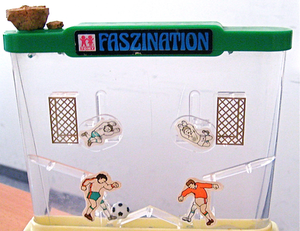Information
- Publication Type: Master Thesis
- Workgroup(s)/Project(s):
- Date: July 2008
- TU Wien Library:
- Diploma Examination: 17. July 2008
- First Supervisor:
Abstract
Real-time computer graphics and simulation has advanced to a level of realism that was regarded as unthinkable a few decades ago. However, uid simulations are still in an infant state for applications that require interactivity. Recent developments in programmability of graphics processing units on current graphics cards have enabled researchers to treat these cards as stream co-processors. This class of processors are designed for parallelizable algorithms that do not make heavy use of branching. Algorithms having these properties can be accelerated signi cantly compared to implementations on current central processing units. Since grid-based uid simulations t perfectly into this scheme, this has become a hot topic in research. Various approaches will be presented in order to determine a combination of algorithms that can easily be parallelized and allow integrating rigid objects with complex boundaries into a uid simulation at interactive rates. Additionally, the usage of uid simulations in computer games will be discussed. An underwater pinball game will be introduced as a practical example, highlighting the considerations that have to be taken into account when adding this game element that was previously impossible to use.Additional Files and Images
Weblinks
No further information available.BibTeX
@mastersthesis{monitzer_2008_FluSi,
title = "Fluid Simulation on the GPU with Complex Obstacles Using the
Lattice Boltzmann Method",
author = "Andreas Monitzer",
year = "2008",
abstract = "Real-time computer graphics and simulation has advanced to a
level of realism that was regarded as unthinkable a few
decades ago. However, uid simulations are still in an
infant state for applications that require interactivity.
Recent developments in programmability of graphics
processing units on current graphics cards have enabled
researchers to treat these cards as stream co-processors.
This class of processors are designed for parallelizable
algorithms that do not make heavy use of branching.
Algorithms having these properties can be accelerated
signi
cantly compared to implementations on current central
processing units. Since grid-based uid simulations
t
perfectly into this scheme, this has become a hot topic in
research. Various approaches will be presented in order to
determine a combination of algorithms that can easily be
parallelized and allow integrating rigid objects with
complex boundaries into a uid simulation at interactive
rates. Additionally, the usage of uid simulations in
computer games will be discussed. An underwater pinball game
will be introduced as a practical example, highlighting the
considerations that have to be taken into account when
adding this game element that was previously impossible to
use.",
month = jul,
address = "Favoritenstrasse 9-11/E193-02, A-1040 Vienna, Austria",
school = "Institute of Computer Graphics and Algorithms, Vienna
University of Technology ",
URL = "https://www.cg.tuwien.ac.at/research/publications/2008/monitzer_2008_FluSi/",
}

 image
image paper
paper

